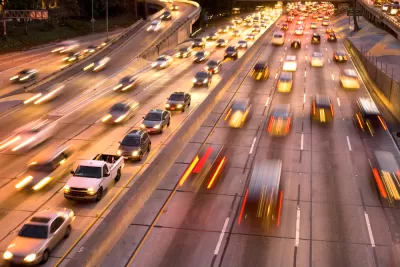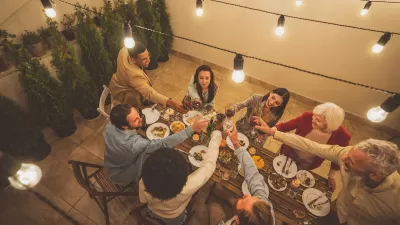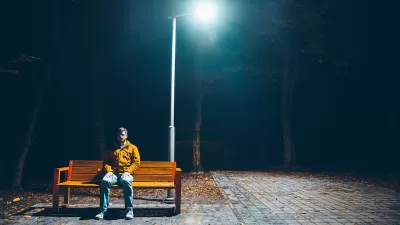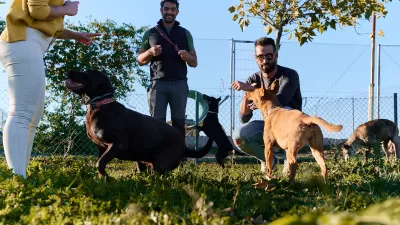Walkable neighborhoods, access to parks, and opportunities for social interaction can help reduce the burden of loneliness and promote community. But many of our cities aren’t built this way.

In an article in Streetsblog USA, Jennifer Kent, Emily J. Rugel and Marlee Bower, Emily J. Rugel, and Marlee Bower zoom out from the traditional view of loneliness as an individual problem to examine how urban design and the way we have built our cities contributes to a loss of social interaction.
The authors, who just completed a systematic review of research on loneliness and urban planning, identified factors that “can help people make connections,” including “housing design, transport systems and the distribution and design of open and natural spaces.”
The study found that living in small or poorly maintained housing can exacerbate loneliness by making people less likely to have friends over. “More universally, living in areas with good access to community centers and natural spaces helps people make social connections.” Additionally, access to public transit and active transportation options can also reduce loneliness and promote social interaction.
The authors also see a connection between socio-economic status and loneliness, largely because people with lower incomes tend to have less access to things like long-term housing they can personalize as their own, walkable neighborhoods, public parks, and other amenities that help reduce loneliness and improve mental health.
Ultimately, the authors conclude that context matters, and “there is no single built environment that is universally ‘good’ or ‘bad’ for loneliness.” But urban design and access to amenities can have a powerful influence on how people interact with others.
FULL STORY: Feeling Lonely? It's Not You, It's the Way We've Built our Nation

Study: Maui’s Plan to Convert Vacation Rentals to Long-Term Housing Could Cause Nearly $1 Billion Economic Loss
The plan would reduce visitor accommodation by 25,% resulting in 1,900 jobs lost.

North Texas Transit Leaders Tout Benefits of TOD for Growing Region
At a summit focused on transit-oriented development, policymakers discussed how North Texas’ expanded light rail system can serve as a tool for economic growth.

Using Old Oil and Gas Wells for Green Energy Storage
Penn State researchers have found that repurposing abandoned oil and gas wells for geothermal-assisted compressed-air energy storage can boost efficiency, reduce environmental risks, and support clean energy and job transitions.

Private Donations Propel Early Restoration of Palisades Playground
Los Angeles has secured over $1.3 million in private funding to restore the Pacific Palisades playground months ahead of schedule, creating a modern, accessible space that supports community healing after recent wildfires.

From Blight to Benefit: Early Results From California’s Equitable Cleanup Program
The Equitable Community Revitalization Grant (ECRG) program is reshaping brownfield redevelopment by prioritizing projects in low-income and environmental justice communities, emphasizing equity, transparency, and community benefits.

Planting Relief: Tackling Las Vegas Heat One Tree at a Time
Nevada Plants, a Las Vegas-based nonprofit, is combating the city’s extreme urban heat by giving away trees to residents in underserved neighborhoods, promoting shade, sustainability, and community health.
Urban Design for Planners 1: Software Tools
This six-course series explores essential urban design concepts using open source software and equips planners with the tools they need to participate fully in the urban design process.
Planning for Universal Design
Learn the tools for implementing Universal Design in planning regulations.
Ascent Environmental
Borough of Carlisle
Institute for Housing and Urban Development Studies (IHS)
City of Grandview
Harvard GSD Executive Education
Toledo-Lucas County Plan Commissions
Salt Lake City
NYU Wagner Graduate School of Public Service





























